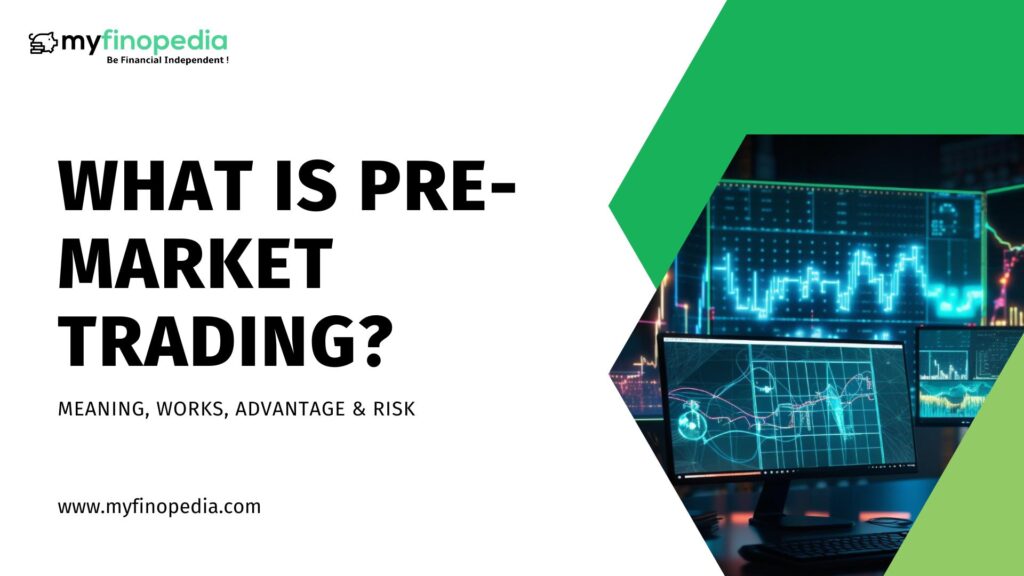Pre-Market Trading refers to the trading done before the traditional market opens in the regular market session. It regularly occurs for 15-20 minutes before the trading session to anticipate the strength & potential of the regular market session.
It is usually conducted through electronic communication networks (ECNs) and is available to investors who have a brokerage account that permits pre-market trading, so it’s important to check with your broker if it’s available.
How does it work?
The New York Stock Exchange (NYSE) introduced pre-market trading in June 1991 whereas the National Stock Exchange allowed Pre-market trading in 2010. It commences early in the morning and closes before the market session starts. Essentially, it has lower volatility and limited liquidity.
The price is set usually according to fundamental supply and demand for security. It maintains the balance between the prices set after the first trade and before the first trade. There are limit orders and market orders. In limit order, an individual buys or sells their stocks at an exclusive rate, whereas in a market order platform, orders seen at prevalent market conditions. Also, transactions only valid for regular trade sessions can go for pre-market sessions.
Advantages
There are many benefits in pre-market trading. Here are some of them:-
- Equilibrium in Price: During the pre-market trading session, buyers & sellers can place orders for a stock when regular trading begins. If there is a significant amount of buying or selling activity during pre-market trading, it can affect the equilibrium price of the stock when regular trading begins.
- Flexibility: Pre-market trading provides greater flexibility by allowing investors to place orders outside of regular trading hours, which can be particularly useful for those with busy schedules.
- Reduced Competition: Pre-market trading typically has lower trading volume than regular trading hours, which can lead to reduced competition and potentially more advantageous prices for buyers and sellers.
- Price Discovery: Pre-market trading can help investors discover what the opening price of a stock might be when regular trading begins, based on the supply and demand of buyers and sellers in the pre-market session.
Risks
Pre-market trading also comes with a number of risks that Investors should be aware of before participating:
- Limited Liquidity: Pre-market trading has lower trading volume. Compared to regular trading hours, it can make it more difficult to execute traders at desired prices or to liquidate positions expeditiously.
- Greater Price Volatility: The lower trading volume during pre-market trading can also lead to greater price fluctuations and volatility. It can result in wider bid-ask spreads as well as unexpected price movements.
- Limited Price Discovery: Not all brokerage firms offer pre-market trading. Many firms do not declare anything until the competition of the trade. Therefore, it may not be available to all investors.
- News Risks: Pre-market trading can be particularly sensitive to news and events occurring outside of regular trading hours. It can also lead to sudden price movements that may be difficult to predict or react to.
- Lack of Information: Pre-market trading can occur before important information are received, such as earnings reports for economic data releases, are made public. This makes it more difficult to make informed investment decisions.
Conclusion
To conclude, we can say that, as with any form of trading, it is important to do your research and understand the potential risk associated with pre-market trading. Thus, having a well-defined trading plan and risk management strategy in place, you can help mitigate potential losses.






